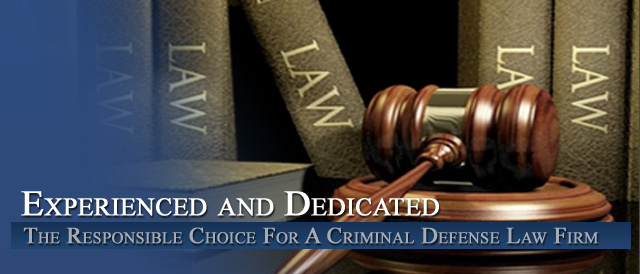




False Allegations of Sexual Assault on a Child in Custody and Visitation Disputes *
A Therapist’s View of False Allegations of Sexual Assault by a Child
Dr. Stephen J. Bishop and Carl E. K. Johnson
Recently, mental health professionals and family law attorneys have reported a marked increase in the incidence of claims of sexual abuse to children involved in custody or visitation disputes arising in the course of dissolution of marriage actions. These reports have received prominent media attention throughout the United States.
Experienced professionals involved in the divorce and child protection fields as well as a limited amount of research on the topichave established that a number of these allegations are false. Moreover, the likelihood of invalidity increases exponentially when such allegations are made in the context of a divorce-related controversy than under other circumstances.
This view constitutes an important modification of the nearly universally accepted finding of prior studies that reports of sexual abuse, particularly when made by a pre-adolescent child, are virtually always true. The conclusion of the cumulative research in the field, however, continues to be that the vast majority of such reports are well-founded.
Editor’s Note – H Michael Steinberg: What this means to the man or woman accused of child molestation is that children are believed until they are proven to be lying. There is a strong presumption that they are telling the truth.
This revelation poses a profound challenge not only for mental health professionals but for family law attorneys (whether functioning as parents’ attorneys or guardians ad litem) and juvenile and domestic relations courts as well. These professionals are charged with ensuring that the best interests of children who are caught in divorce-related disputes involving accusations of sexual harm are served.
However, it is equally clear that children deserve to be shielded from the psychological trauma which can result from being made the focus of spurious charges of sexual victimization in the course of an inter-parental conflict. In particular, children should be spared the pain of the often lengthy disruption of their relationship with a wrongfully accused parent.
Editor’s Note – H Michael Steinberg: Even though the welfare of affected youngsters is obviously the paramount concern in these situations, justice demands that the adverse impact that an unfounded accusation can have on an innocent parent be at least minimized whenever possible. This impact can be financial as well as psychological, since substantial legal and expert witness fees frequently are incurred in such cases.
In response to this challenge, leading child psychiatrists have developed diagnostic techniques designed to assist clinicians in distinguishing between valid and invalid abuse allegations . However, little has been written to assist parents’ attorneys, guardians ad litem, judges and referees in dealing with these difficult controversies.
This article summarizes the current psychiatric understanding of the problem and discusses ways in which this knowledge can be applied in the legal and practical context encountered by practitioners and courts.
Types of Sexual Abuse Allegations
Sexual abuse allegations can arise in a variety of ways during the course of dissolution proceedings. In some cases, the circumstances underlying the assertions may constitute one of the primary reasons that a spouse is seeking to dissolve the marriage. These generally involve situations where a father or stepfather is accused of having sexually assaulted one or more of the children in the family (generally female but, in a significant number of cases, male) during the course of the marriage itself.
In a few cases, the allegations are not present at the inception of the proceeding, but are made prior to the entry of a decree. Generally, these involve accusations of incestuous behavior on the part of a father or stepfather which allegedly did not come to light until after separation, or such behavior which purportedly has occurred since that date. Occasionally, allegations of sexual misconduct by a male companion of the mother subsequent to separation can surface at this stage.
In many cases, however, these allegations are made for the first time in connection with post-decree proceedings to modify the custody or visitation arrangements specified in the permanent orders. In this context, the allegations can take many forms.
Probably the two most common are assertions by a custodial mother that the father has abused a child during the course of visitations or, conversely, charges by a non-custodial father that the mother’s new husband or a male companion has committed the abuse.
Where a mother’s custodial rights are challenged, it is often also asserted that the assaultive acts took place under the following circumstances: (1) where she knowingly assented to the transactions; (2) where she knew or reasonably should have been aware of them, but was either unwilling or unable to protect her children; or (3) although rarely alleged, where she actively participated in them herself.
Claims of misconduct by a custodial father are also relatively common. Less frequent are charges that another person, such as a stepson in either the mother or father’s household or a maternal or paternal male relative or family friend, is the perpetrator. These charges generally are accompanied by a contention that the parent is responsible in some way for the abuse. In a small number of cases, the sole or principal offender is alleged to be female, such as a mother, stepmother, aunt, grandmother, stepsister or nanny.
Regardless of when abuse reports arise, they may vary widely in terms of such significant factors as the nature of the conduct alleged, its frequency and the circumstances under which it occurred. The fact that the term “sexual abuse” is used to describe such a wide variety of transactions constitutes one of the chief difficulties faced by the courts in dealing intelligently with abuse allegations.
At one end of a wide spectrum, for example, are such transactions as an isolated instance of exhibitionistic behavior or touching or fondling of an erogenous area of a child’s body which takes place in a non-threatening manner and environment. At the other extreme would be an incestuous relationship of several years’ duration involving intercourse or oral sex perpetrated in a sadistic manner.
Abuse claims can originate in a variety of ways. In many cases, the assertions are based on explicit accusations of sexual victimization by a child. In other situations, they may be predicated on statements by a child as to transactions in which the youngster has been involved from which the accusing parent has drawn an inference that the child has been sexually violated. These inferences frequently are supported by the opinion of a mental health professional. Accusations of this nature often relate to occurrences which purportedly transpired during the course of intimate but routine parental care, such as dressing, bathing or sleep-time activities.
Children’s statements may originally have been made to a parent or, in many cases, a sibling, friend, teacher, school nurse, day care worker or therapist. Statements may emerge spontaneously or as the result of an interrogation of the child by a parent, social worker or law enforcement officer who became concerned by the child’s behavioral or emotional problems and perceived them to be symptoms of abuse by someone who is regularly involved with the child.
In some cases, the abuse allegations are based on statements by witnesses, such as siblings, playmates, relatives, family friends or neighbors, who purportedly have observed the wrongful conduct. In others, the allegations are based not on statements but on conclusions drawn by a parent, relative, mental health professional, teacher or other school official who has observed the child’s disturbing behavior (sexualized acts such as exhibitionism or masturbation) or the child’s extreme emotional reactions (nightmares, persistent sadness or anxiety).
Diagnosis of Sexual Abuse: Physical Signs
Except in the most obvious cases, diagnosis of sexual abuse in children can be a highly challenging task. Substantial expertise is required on the part of the psychiatrists, psychologists, social workers and other mental health professionals charged with the responsibility. This is because conclusive physical findings of abuse are made in only a fraction of cases. However, where there are such findings, they generally are immensely helpful in narrowing the scope of the inquiry to the identification of the perpetrator if, indeed, this question remains unanswered.
In a somewhat larger, but still small number of cases, physical findings consistent either with the occurrence of abuse or some other more benign cause are made. Although inconclusive by themselves, these findings can sometimes be significant when correlated with other diagnostic indicators of abuse discovered during the course of the psychiatric or psychological evaluation of the child.
In most cases, no physical signs of sexual victimization are found. This does not exclude the possibility that the child has been abused. However, a negative finding can be significant in situations where the nature of the allegations are such that some physical sign might ordinarily be expected (for example, repeated penile or digital vaginal or anal penetration).
Editor’s Note – H Michael Steinberg:This comes as a great surprise to many falsely charged with sexually assaulting a child. Individuals, desperate to prove their innocence, cling to the absence of evidence of physical abuse as proof they are innocent. A natural reaction.
Psychological and Behavioral Indicators
In most cases, an affirmative finding of abuse hinges on the presence of diagnostic indicators of a psychological rather than physical nature. At least one attempt has been made to develop a diagnostic profile of sexually abused children for use by clinicians and courts in identifying abuse victims.
The Child Sexual Abuse Accommodation Syndrome (“Accommodation Syndrome”) is analogous to the plethora of diagnostic classifications encompassed in the Diagnostic and Statistical Manual of Mental Disorders (“DSM III”), promulgated by the American Psychiatric Association. The DSM III classifications are widely used by mental health professionals in identifying the myriad psychiatric and psychological illnesses and conditions formally recognized in the manual.
Although the Accommodation Syndrome has gained some recognition in criminal courts, and is undoubtedly used to some extent by a number of clinicians worldwide, it has not gained universal acceptance as a diagnostic tool by the mental health community and is not recognized by DSM III.
Even though many clinicians have observed that sexually abused children often display a number of signs or symptoms which characterize the post-traumatic stress disorder, a condition recognized by DSM III, most mental health professionals would agree that such children also frequently display signs or symptoms which are described under other classifications. In the present state of psychological understanding, no single psychiatric classification has yet been developed that would give a full diagnostic picture of the sexually abused child.
Although there may be sexually violated children who are exceptions to this rule, clinicians in the field generally agree that, as actually encountered in therapy, a child who has been seriously abused will inevitably exhibit one or more cognitive, behavioral or emotional problems. Moreover, the severity of the problems generally is in direct proportion to the intensity and duration of harm that the child has suffered. For instance, it is generally believed that multiple personality disorder, of the most complex and intriguing of psychiatric illnesses, originates as a maladaptive response to extreme physical, sexual or psychological child abuse.
Behavioral and emotional manifestations which are frequently strong indicators of sexual abuse include:
- depression;
- anxiety as manifested in such phenomena as frequent nightmares or persistent daytime fearfulness, either generalized or particularized to certain situations or people;
- sexual acts of various kinds, including exhibitionism, masturbation and attempts to simulate intercourse with other children; and
- enuresis or encopresis. Editor’sNote – H Michael Steinberg: Bedwetting
Thus, when an allegedly abused child displays none of these characteristics, it is probable that the child has not suffered severe abuse.
Statements of the Victim
Statements by a purported minor victim can constitute both independent and corroborating evidence of sexual abuse. Generally, statements which are valid indicators of abuse exhibit most of the following qualities:
- the terms used are ones which a child of that particular age could reasonably be expected to know;
- when making the statements, the child exhibits a significant degree of emotional anguish, such as nervousness, hysteria, sadness or extreme withdrawal;
- the statements convey a sense of spontaneity as opposed to a rehearsed presentation;
- when repeated statements are made, the basic details remain relatively consistent over time; and
- from the standpoint of reality, the statements describe events which actually are possible.
In applying these tests, many qualifications must be observed. Among the most imperative is that they be utilized with a high degree of sensitivity to the age and developmental status of the child and with appropriate recognition of the child’s cognitive capabilities.
For example, the same degree of accuracy with respect to details and consistency cannot be expected from a three- or four-year-old child as from an adolescent because the young child’s cognitive ability to ascertain and remember persons, places and time sequences is at an immature stage of development. Thus, statements by such a child which may appear ambiguous, contradictory or otherwise unreliable to the untrained listener may, in fact, provide a trained professional with extremely valuable information.
Sometimes an alleged victim will recant an initial accusation or, over a period of time, go through a cycle of multiple assertions and recantations. Situations of this nature can pose difficulties for even the most adept evaluator and often result in inconclusive findings.
The Evaluation Process
In general, a child’s account of an experience is more accurate when made soon after its occurrence. This underscores the importance of a prompt interview of an alleged sexual victim by a qualified, independent evaluator when the allegations first surface as a critical part of a thorough evaluation.
A competent evaluator will limit the use of leading questions as much as possible and take care to avoid the possibility that the interview process itself may become sexually overstimulating. In addition to the interview of the child, a thorough evaluation generally will include interviews of the parents and, to the extent possible, any alleged non-parental perpetrators. It will also include contacts with witnesses, a review of relevant documents and observations of the child with each parent. In the opinion of one respected authority, whenever possible it is important to observe both parents interacting with the child together.
Obviously, the more diagnostic indicators of abuse found, the more likely it is that sexual abuse has occurred.
Thus, a child who (1) exhibits physical signs of abuse, (2) exhibits behavioral or emotional problems of the nature previously described, and (3) makes statements explicitly or inferentially describing abusive experiences presents a clear, positive diagnostic profile. Even if the perpetrator’s identification is still in doubt, these clear-cut cases are relatively easy to resolve in terms of deciding what measures are necessary for the child’s immediate protection, the most advantageous mode of therapeutic intervention for the child, and the measures which are necessary to treat other family members, including the perpetrator.
At the other end of the pendulum are situations where, for a variety of reasons, the allegations appear suspect on their face or, after some scrutiny, both the child and the initiating parent admit them to be a fabrication.
Dealing With Inconclusive Findings
Unfortunately, an unequivocal diagnostic picture is rare. In many, if not most cases, a thorough inquiry will produce some findings that are indicative of the possibility of abuse, others that negate such a possibility, and still others that are simply inconclusive. Moreover an evaluator, no matter how skilled or experienced, may be unable to reach a conclusion as to whether abuse has occurred.
This fact can be difficult for lawyers and judges who are conditioned to achieve a decisive answer–a finding that something either occurred or did not occur–in virtually every case. This can place an evaluator under a great deal of pressure to come to a definite conclusion, regardless of the evaluator’s view of the facts, in order to meet the legal system’s perceived expectations for certainty and to avoid the risk of being seen as professionally ineffective.
In seeking to satisfy these demands, a mental health professional may be tempted to “play the odds” by concluding that abuse has taken place in a particular case simply because the statistics show that the vast majority of abuse reports are valid. In the authors’ opinion, mental health professionals should strongly resist this temptation. Moreover, lawyers, as part of their ethical obligation to improve the judicial system, should refrain from imposing expectations for certainty at all costs upon evaluators. Thus, at the outset, counsel should let the evaluator know that a definitive conclusion may not be possible and that there is no demand for such a determination unless truly warranted. Judges also should realize that, in the current state of psychiatric knowledge, a clear cut either/or decision regarding the validity of abuse allegations in every case may not be possible and may be contrary to the best interests of the affected children.
Where findings are inconclusive, measures nonetheless need to be taken to provide for the future protection of the child in the event that the child’s environment does indeed prove to be dangerous. These measures should include instructing the child in self-protection and educating the key adults in the child’s life to recognize signs of abuse.
Conclusion
Determining the validity of sexual abuse allegations as accurately as possible is vital to the integrity of the judicial process.
Credit for this excellent article is given to Dr. Stephen J. Bishop and Carl E. K. Johnson
The Steinberg Colorado Criminal Defense Law Firm
A Colorado Criminal Defense Lawyer of Sexual Assault on a Child Allegations
Other Articles of Interest:
- 10 Things If You Are Charged
- Ten Things to do When Charged
- Pretrial Investigation Phase Explored
- 020. COLORADO CRIMINAL CODE – OFFENSES INVOLVING THE FAMILY RELATION
- Sex Crimes in Colorado












